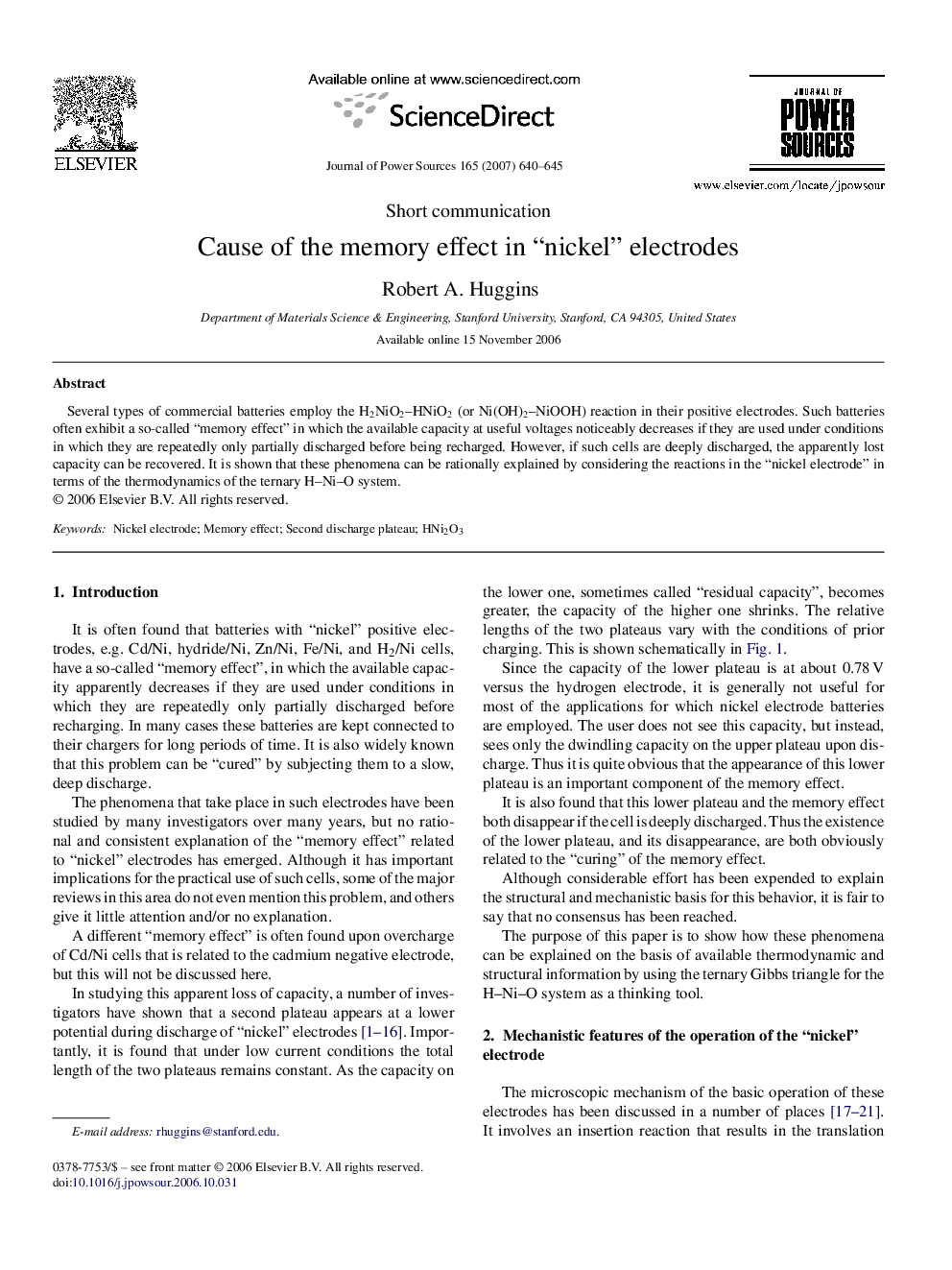| Article ID | Journal | Published Year | Pages | File Type |
|---|---|---|---|---|
| 1291574 | Journal of Power Sources | 2007 | 6 Pages |
Abstract
Several types of commercial batteries employ the H2NiO2–HNiO2 (or Ni(OH)2–NiOOH) reaction in their positive electrodes. Such batteries often exhibit a so-called “memory effect” in which the available capacity at useful voltages noticeably decreases if they are used under conditions in which they are repeatedly only partially discharged before being recharged. However, if such cells are deeply discharged, the apparently lost capacity can be recovered. It is shown that these phenomena can be rationally explained by considering the reactions in the “nickel electrode” in terms of the thermodynamics of the ternary H–Ni–O system.
Keywords
Related Topics
Physical Sciences and Engineering
Chemistry
Electrochemistry
Authors
Robert A. Huggins,
